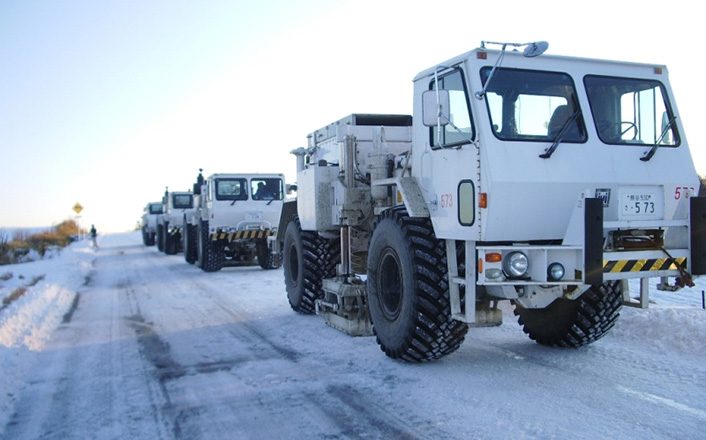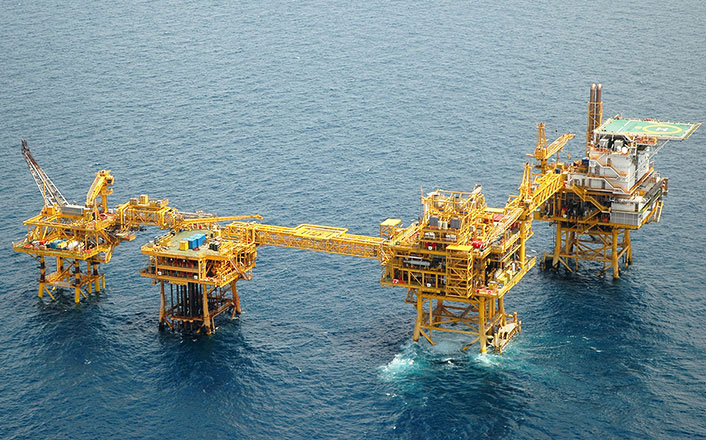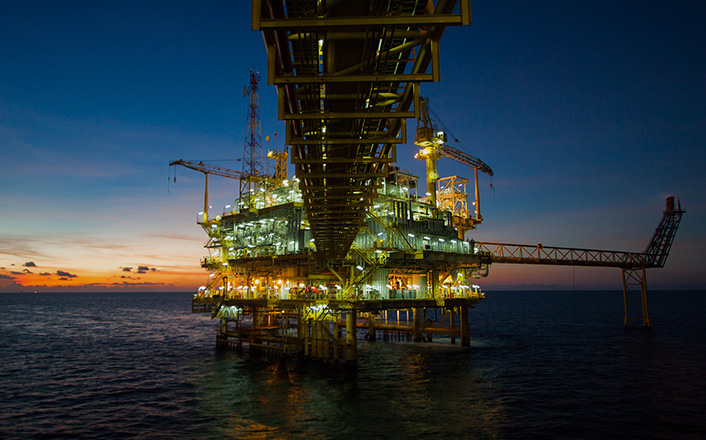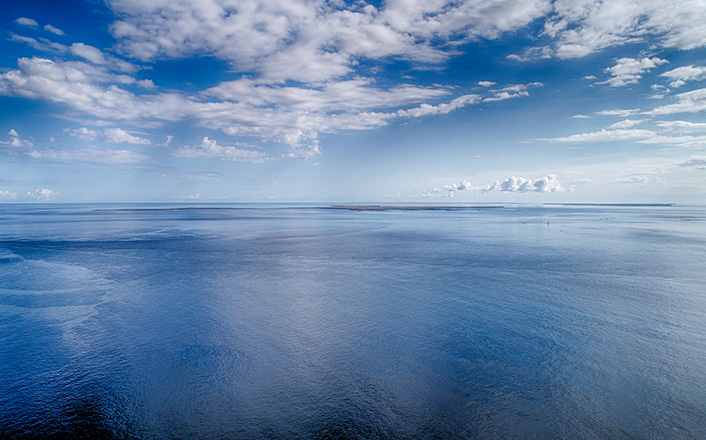Exploration, Development and Production
The oil and gas supply chain consists of three streams: upstream, which covers the exploration, development and production of oil and gas; midstream, which includes the transportation of oil and gas by tanker; and downstream, which includes the refinement and sales processes. JX Nippon Oil and Gas Exploration (NOEX) is the sole upstream arm of ENEOS Group and is involved in the development and production of oil and natural gas. The following shows the basic flow of our development and production business.
Step.1

Our primary aim is to acquire the right to develop blocks--in other words, "interests"--from resource-rich countries. There are various ways we acquire these interests, including open tender for new licensed acreage held by the countries, direct negotiation, or by farming into existing license blocks where other companies already have interests.
Step.2

Exploration includes searching underground for oil and gas deposits, and evaluation in the case of discovery. Once a licensed block interest is acquired, extensive surveys are conducted, including terrestrial geological surveys, aerial photographs, satellite images, gravity and magnetic surveys and seismic surveys, before the decision is taken to drill a well. After evaluating the potential for oil and gas fields in the licensed block, the drilling location for an exploration well is selected based on the survey data. If the presence of oil and/or gas is confirmed by the exploration well, an appraisal well is then drilled to evaluate the extent of the discovery.
Step.3

When it is determined from oil layer and gas layer analyses that commercial production is feasible, development takes place. This development includes the design and construction of oil and gas processing systems, pipelines, storage, and offloading facilities, and the drilling of production wells. When developing a large gas field, the site is also assessed for liquefied natural gas (LNG) development. LNG projects require large-scale liquefaction plants and exporting facilities, and therefore require the building and maintenance of long-term customer relationships.
Step.4

Following trial operation of the facilities, the production of crude oil and natural gas begins. Volumes of subsurface reserves gradually decrease as production continues. It is therefore necessary to continuously strive to secure new license block interests.
Step.5

When production ends, or when a production sharing contract or license period expires, the site must be quickly returned to its pre-development state. All wells must be closed (often by pouring cement into them) and all facilities and equipment must be removed to reduce the burden on the environment. However, there are cases when, at the request of the producing country's government or its state-owned company, the wells and facilities are handed over to the country or company without being closed.
